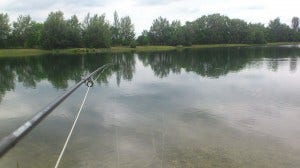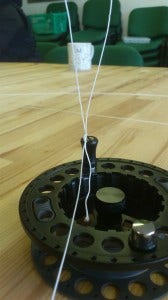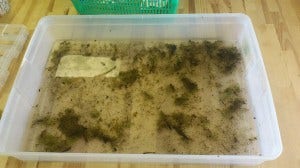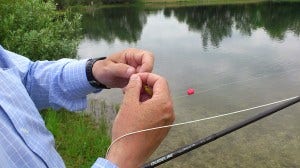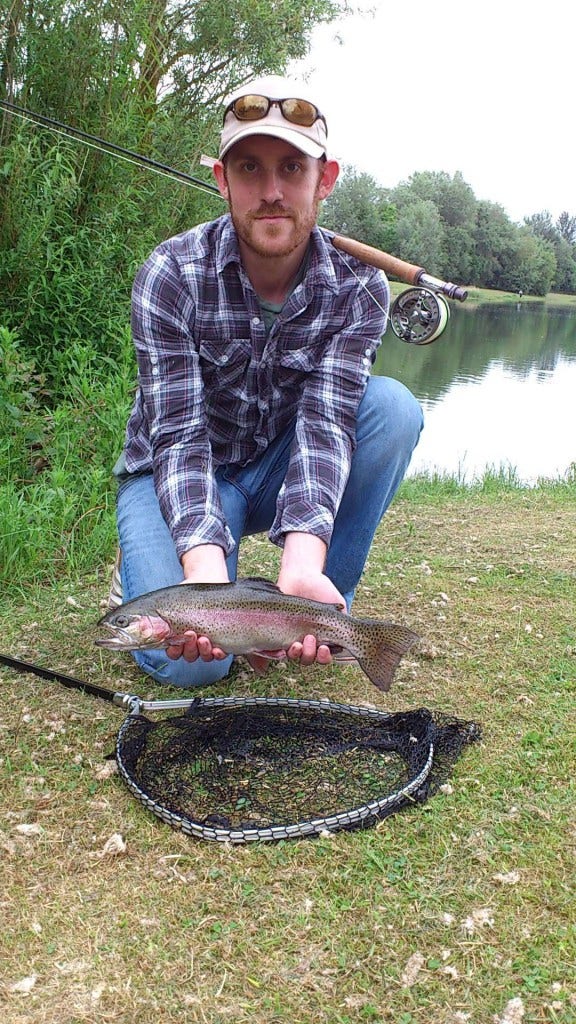Daniel Marsh found out...
Having experienced quite a bit of coarse fishing as a younger man in my local neck of the woods (the Cambridgeshire Fens) a fly rod was something that never really crossed my angling path. It always looked so alien; that strange thick line and antiquated looking reel – it wasn’t fishing as I knew it, or remembered it.
Whereas with coarse fishing, one always assumed that if you didn't quite understand something (a new type of lure, a different rigging system) you could just give it a go and work it out for yourself. Fly fishing never seemed quite so easily blagged to me.
It was with this perspective that I approached Sportfish's One Day Stillwater Fly Fishing Course: I had no idea. No idea why fly line was thicker at one end than the other; no idea why fish couldn't see that huge line a mile away; no idea why you didn't reel all that loose line in on that odd circular reel; and I certainly had no idea how it all fitted together.
Luckily, the first half of the day on this daylong beginners’ course was dedicated to alleviating those very anxieties. The first thing we as a group did (ten of us) was introduce ourselves (after having a cup of tea) and talk a little bit about what we all knew about fly fishing. Thankfully, most people were in exactly the same boat as me.
We were then introduced to the kit. Different sized fly rods, line and reels, of varying quality and price. An interesting look at a previously unfamiliar selection of gear, which was very different from the coarse equipment I remembered from my younger fishing days. Fly rods, unlike coarse rods, are designed to cast a specific weight of line. We were issued with a 9’ 0” rod, designed to throw 6 weight line (the ideal beginners kit for stillwater).
A fly line is designed to give the weight needed to load (flex) the rod. It is tapered and I would use a weight forward flyline, as this is the norm for stillwater fishing. This is why (in answer my previous query) the line is weightier and thicker at the front, enabling the caster to shoot the thinner line at the rear good distances easily.
Once the kit was sorted, we got down to the nitty-gritty of knot tying: a welcome addition to the course for anyone whose previous experience of knot tying consisted of tying the same knot, over and over again.
A grinner or uni knot was demonstrated as the best way of securing fly to leader, leader to loop, loop to line, and just about anything to anything else. Line was provided and attempts were numerous, until we'd all achieved the desired result. Here's an example of my proudly completed effort:
Before going outside, there was one last learning curve yet to be tackled: flies. And what better way to explain flies than with the very pond life they have been created to mimic. We were presented with a tray of pond water in which we could compare the types of creatures darting around with the types of flies available. It was a great way of understanding exactly how and why fishing flies have been made, and a good (if not slightly murky) insight into the mind of a fish.
It was then time to learn to cast. The idea is to keep that 30 feet of line in the air above your head when casting. Now this is the bit that scares most coarse fishers, who are used to keeping their 30 feet of line neatly tucked on the reel.
The experience was at first awkward, feeling more like the act of a lion tamer than a fisherman. The perpetual-like motion required to keep the line in the air, above your head and as straight as possible (both in front and behind you) was always going to be more than could be grasped in one session.
That said, we started low (keeping the line below head-height at first) and worked our way up, learning to keep our elbow in a pivoted, fixed position, and not to let our arm go beyond two o’clock on the back cast, and ten o’clock on the forward cast.
Overall the casting tutorial lasted around 45 minutes. By the end, I could certainly feel the results in my inexperienced forearm. It was at this point I started to realise that the greatest difference between fly fishing and coarse fishing, appeared to be that one actually resembled a sport slightly more than the other.
After lunch (provided), it was the moment we'd all been waiting for: time to fish. The option to continue to learn to cast was there for all who did not feel ready for the lake, but on this occasion all ten of the group were happy to progress.
Divided between two instructors, the group split and each person was assigned an individual swim on the lake. The lake is perfectly landscaped for fly fishing; with minimal shrubs and plenty of space to cast away, it was a great beginner platform. I managed to hook the grass more times than weeds or trees, which made for relatively easy unhooking.
The hardest part when starting out is achieving a good casting distance. A good cast depends on your ability to keep the line horizontal in the air (on both back cast and forward cast), creating the right level of tension on the line (usually after around three or four casts) before releasing. It probably took me a good hour of fishing before finally getting to grips with this, after which I noticed a significant difference in the quality of my cast.
After a couple of hours of fishless pursuit, word started to trickle down that they were biting on something called a buzzer (an imitation of a non-biting mosquito in the state between a larva and flying insect) using an indicator (the nearest fly fishing comes to using a float): a small, high-vis piece of foam that attaches to the line.
The method was also similar to float fishing; the line was cast to a good location and allowed to sit, using the indicator to detect the bite, and bite they did. Within the next hour, most of the group had achieved their first rainbow trout caught on fly. Although admittedly, I hadn't - which was starting to worry me.
It was time to mix it up a bit. I changed swim and with the help of an instructor also changed fly several times – retaining the indicator. After losing my first take to a poorly made hook that snapped (and maybe a little bit too much tension on the line from myself), I finally achieved my first rainbow trout after around three hours of fishing.
The fish was around 2 ½ to 3 lbs (we'll call it 3...), and unlike the majority of fish caught coarse fishing, tasted very nice barbecued with a glass wine. It was also a welcome end to a very enjoyable day spent by the lake.
To book and for further information, please contact Sportfish Reading on 0118 930 3860, email tuition@sportfish.co.uk or visit visit http://www.sportfish.co.uk/tuition/tuition-lessons/fly-fishing-lessons-and-courses/one-day-stillwater-fly-fishing-for-trout-course the days course is £99 and includes instruction, fishing, tackle hire and lunch.

